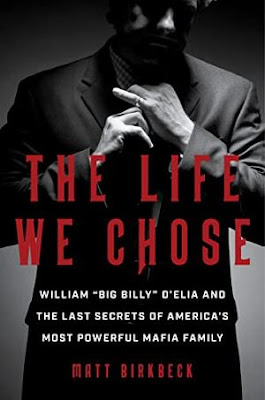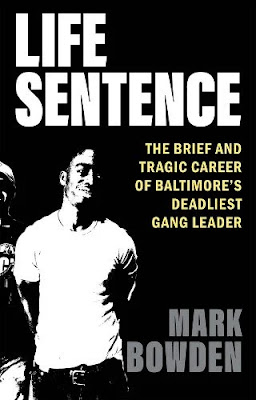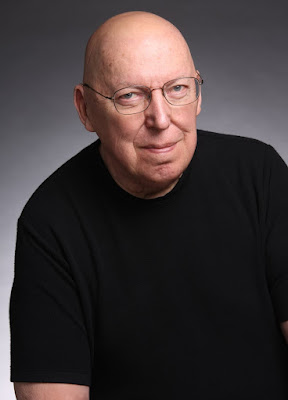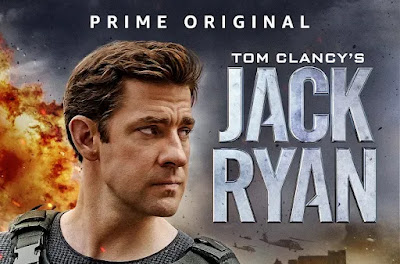My Threatcon column on
China and fentanyl was posted on Counterterrorism magazine's website.
You can read the column via the below link or the below text:
IACSP - ThreatCon Articles
Twenty years ago, I was
crippled with spine and nerve damage.
The severe damage to my back
was caused by extreme wear and tear, having been an amateur middleweight boxer from
my teens to my late 20s, and having performed rigorous physical work in cold
and wet weather on a Navy harbor tugboat for two years at the nuclear submarine
base at Holy Loch, Scotland after serving two years on an aircraft carrier
during the Vietnam War.
The pain was God-Awful, and
after being released from the hospital to recuperate at home, my doctor
prescribed a fentanyl patch. Although the patch relieved some of the pain, I hated
the near coma drowsy feeling of the drug. A visiting nurse did like the look of
my vitals, so she called an ambulance to take me to the hospital. The ER doctor
took me off the fentanyl and thankfully placed me on other pain medicine.
But unfortunately, many drug
addicts are attracted to the near-coma high that fentanyl and other opiates produce
for them. You can see these sad drug addicts stumbling along streets in most
cities, looking like zombies from the “Walking Dead” shows.
According to the Center for
Disease Control (CDC) overdose deaths in the United States tied to
the powerful synthetic opioid fentanyl soared 279% from 2016 to 2021.
In just five years, deaths involving fentanyl rose from 6 per
100,000 people to 22 per 100,000, according to the CDC. Fentanyl is a synthetic opioid that is up
to 50 times stronger than heroin and 100 times stronger than morphine. It is a
major contributor to fatal and nonfatal overdoses in the U.S.1
There are two types of fentanyl: pharmaceutical fentanyl and illicitly manufactured
fentanyl. Both are considered synthetic opioids. Pharmaceutical
fentanyl is prescribed by doctors to treat severe pain, especially after
surgery and for advanced-stage cancer, but most recent cases of fentanyl-related
overdose are linked to illicitly manufactured fentanyl, which is distributed
through illegal drug markets for its heroin-like effect. It is often added to
other drugs because of its extreme potency, which makes drugs cheaper, more
powerful, more addictive, and more dangerous.
Illicitly manufactured fentanyl (IMF) is available on the drug
market in different forms, including liquid and powder. Powdered fentanyl looks
just like many other drugs. It is commonly mixed with drugs like heroin, cocaine,
and methamphetamine and made into pills that are made to resemble other
prescription opioids. Fentanyl-laced drugs are extremely dangerous, and many
people may be unaware that their drugs are laced with fentanyl.
“Fentanyl and other synthetic opioids are the most common drugs
involved in overdose deaths. Even in small doses, it can be
deadly. Over
150 people die every day from
overdoses related to synthetic opioids like fentanyl,” the CDC stated.
The fentanyl mixed
with other drugs that killing Americans comes from Mexican drug trafficking
cartels, and the cartels get their fentanyl from China.
Diplomatic efforts to
have China curb the sale of fentanyl to Mexican criminals has failed, but
finally the U.S. government has taken action.
The Justice Department announced on June 23rd the arrest of two
individuals and the unsealing of three indictments in the Southern and Eastern
Districts of New York charging China-based companies and their employees with
crimes related to fentanyl production, distribution, and sales resulting from
precursor chemicals.
According to the Justice department, these indictments represent
the first prosecutions to charge China-based chemical manufacturing companies
and nationals of the People’s Republic of China (PRC) for trafficking fentanyl
precursor chemicals into the United States.
“Specifically, the indictments allege the defendants knowingly
manufactured, marketed, sold, and supplied precursor chemicals for fentanyl
production in the United States in violation of federal law.”
During
these investigations, the Drug Enforcement Administration (DEA) seized more
than 200 kilograms of fentanyl-related precursor chemicals, a quantity that
could contain enough deadly doses to kill 25 million Americans.
The
Justice Department noted that fentanyl is a highly addictive synthetic opioid
that is 50 times more potent than heroin and 100 times more potent than
morphine. Fentanyl and its analogues have devastated communities across the
United States and are fueling the ongoing overdose epidemic, which the Centers
for Disease Control and Prevention (CDC) recently estimated killed
approximately 110,000 Americans in 2022. Fentanyl is now the leading cause of
death for Americans ages 18 to 49. Fentanyl analogues, similar in chemical
makeup and effect to fentanyl, can be even more potent and lethal than
fentanyl.
“When I announced in April that the
Justice Department had taken significant enforcement actions against the
Sinaloa Cartel, I promised that the Justice Department would never forget the
victims of the fentanyl epidemic,” said Attorney General Merrick B. Garland. “I
also promised that we would never stop working to hold accountable those who
bear responsibility for it. That includes not only going after the leaders of
the Cartels, their drug and gun traffickers, their money launderers, security
forces, and clandestine lab operators. It also includes stopping the Chinese
chemical companies that are supplying the cartels with the building blocks they
need to manufacture deadly fentanyl.”
DEA
Administrator Anne Milgram added, “Today’s announcement is a considerable step
forward in our unrelenting fight against fentanyl, targeting the threat where
it starts. These companies and individuals are alleged to have knowingly
supplied drug traffickers, in the United States and Mexico, with the
ingredients and scientific know-how needed to make fentanyl – a drug that
continues to devastate families and communities across the United States,
killing Americans from all walks of life. Targeting entire criminal drug
networks, from the source of supply to the last mile of distribution, is
critical to saving American lives. DEA will not stop until this crisis ends.”
The
Justice Department announced that an indictment was unsealed in the Southern District
of New York charging the China-based chemical company Hubei Amarvel Biotech Co.
Ltd., aka AmarvelBio, (Amarvel Biotech), as well as its executives and
employees Qingzhou Wang, 35, aka Bruce (Wang); Yiyi Chen, 31, aka Chiron
(Chen); and Fnu Lnu, aka Er Yang and Anita (Yang), with fentanyl trafficking,
precursor chemical importation, and money laundering offenses. Wang and Chen,
both nationals of China, were expelled from Fiji on June 8, arrested by the
DEA, and presented before U.S. Magistrate Judge Wes Reber Porter in Honolulu
federal court on June 9. Wang and Chen were ordered detained in Honolulu and
will appear in Manhattan federal court following their arrival in the Southern
District of New York. Yang, also a national of China, is at large.
“The
indictment unsealed today in the Southern District of New York is the next step
in our fight against fentanyl,” said U.S. Attorney Damian Williams for the
Southern District of New York. “Today, we target the very beginning of the
fentanyl supply chain: the Chinese manufacturers of the raw chemicals used to
make fentanyl and its analogues. We’ve charged a Chinese precursor chemical
company. And that’s not all. We’ve charged and arrested some of the individuals
who work at the company. That includes a corporate executive and a marketing
manager. They’re in American handcuffs. And they’re going to face justice in an
American courtroom.”
According
to the allegations contained in the indictment and other court filings, Amarvel
Biotech is a chemical manufacturer based in the city of Wuhan, in Hubei
province, China, that has exported vast quantities of the precursor chemicals
used to manufacture fentanyl and its analogues.
“Amarvel
Biotech has openly advertised online its shipment of fentanyl precursor
chemicals to the United States and to Mexico, where drug cartels operate
clandestine laboratories, synthesize finished fentanyl at scale, and distribute
the deadly fentanyl into and throughout the United States. Through its website
and a host of other storefront sites, Amarvel Biotech has targeted precursor
chemical customers in Mexico, including by advertising fentanyl precursors as a
“Mexico hot sale;” guaranteeing “100% stealth shipping” abroad; and posting to
its websites documentation of Amarvel Biotech shipping chemicals to Culiacan,
Mexico, the home city of the Sinaloa Cartel, one of the dominant drug
trafficking organizations in the Western Hemisphere and which is largely
responsible for the massive influx of fentanyl into the United States in recent
years,” The U.S. Attorney’s Office stated.
“Amarvel
Biotech has also endeavored to thwart law enforcement interdiction of its
precursor chemical shipments. Amarvel Biotech has advertised, for example, the
company’s ability to use deceptive packaging – such as packaging indicating the
contents are dog food, nuts, or motor oil – to ensure “safe” delivery to the
United States and Mexico. Over the past eight months, during an undercover
investigation by the DEA, Amarvel Biotech and its principal executive, Wang,
its marketing manager, Chen, and its sales representative, Yang, shipped more
than 200 kilograms from China to the United States of precursor chemicals used
to make fentanyl and its analogues. Amarvel Biotech, Wang, Chen, and Yang
shipped the precursors to the United States intending that the chemicals would
be used to produce fentanyl and its analogues in New York, and they agreed to
continue supplying multi-ton shipments of fentanyl precursors despite being
told that Americans had died after consuming fentanyl made from the chemicals
that the defendants had sold.”
DEA’s
Special Operations Division Bilateral Investigations Unit investigated the
case, with assistance from the DEA Bangkok Country Office, DEA Wellington
Country Office, DEA Beijing Country Office, DEA Honolulu District Office, DEA
New York Organized Crime Drug Enforcement Task Force (OCDETF), DEA Riverside
District Office, DEA Special Testing Laboratory, the Justice
Department’s Office of International Affairs, the Royal Thai Police
Narcotics Suppression Bureau, the Fiji Police Force Narcotic Bureau, the Fiji
Office of the Director of Public Prosecutions, and the U.S. Attorney’s Office
for the District of Hawaii.
The
Southern District of New York’s Office’s National Security and International
Narcotics Unit is prosecuting the case.
The
Justice Department also announced that two indictments were unsealed in the
Eastern District of New York that detail criminal conspiracies by companies and
employees based in China to manufacture and distribute fentanyl in the United
States.
According
to the Justice Department, the first indictment charges Anhui Rencheng
Technology Co. (Rencheng) Ltd.; Anhui Moker New Material Technology Co.;
Shutong Wang; and Shifang Ruan, aka Eva, with conspiracy to manufacture and
distribute fentanyl, manufacture of fentanyl, and other related offenses. In
addition, the indictment charges those same defendants, as well as Xinyu Zhao,
aka Sarah, and Yue Gao, aka Ellie, with illegally concealing their activities,
including through customs fraud and introducing misbranded drugs into the U.S.
marketplace. The indictment also charges Rencheng, Wang, and Ruan with
conspiracy to distribute butonitazene, a controlled substance.
The
second indictment charges Hefei GSK Trade Co. Ltd, aka Hebei Gesuke Trading Co.
Ltd. and Hebei Sinaloa Trading Co. Ltd.; and Ruiqing Li with similar offenses,
including conspiracy to manufacture and distribute fentanyl, manufacture of
fentanyl, conspiracy to distribute a List I chemical, distribution of a List I
chemical, customs fraud conspiracy, introducing misbranded drugs into
interstate commerce, and distribution of metonitazene, a controlled substance.
“As
alleged, the defendants knowingly distributed the chemical building blocks of
fentanyl to the United States and Mexico, even providing advice on how they
should be used to manufacture this dangerous drug which inflicts untold tragedy
in New York City, Long Island, and across the nation,” said U.S Attorney Breon
Peace for the Eastern District of New York. “This prosecution shows that the
companies and individuals who fuel our nation’s deadly opioid epidemic –
wherever they are located – will be found and prosecuted to the full extent of
the law.”
As
alleged in the indictments, the defendant companies supplied precursor
chemicals to the United States and Mexico, among other places, knowing they
would be used to manufacture fentanyl. The defendant companies openly
advertised their products all over the world, including to the United States
and Mexico, on social media platforms. They also sent their chemical products
to the United States and Mexico by boat and by air, using public and private
international mail and package carriers. To prevent detection and interception
of chemical products at the borders, the defendant companies employed deceptive
and fraudulent practices, such as mislabeling packages, falsifying customs
forms, and making false declarations at border crossings. The chemicals
distributed by the defendants included all the materials necessary to
manufacture fentanyl via the most common pathways.
“Mexican
drug trafficking organizations, including but not limited to the Sinaloa Cartel
and the Jalisco New Generation Cartel (CJNG), have increasingly availed
themselves of the fentanyl precursors and masked fentanyl precursors developed
and distributed by the defendant companies and companies like them. The
chemicals provided by the defendant companies have enabled such cartels and
other drug trafficking organizations to produce fentanyl in clandestine
laboratories in Mexico on a massive scale, for subsequent distribution in the
United States and elsewhere. The materials and instructions provided by the
defendant companies and companies like them have directly caused and
contributed to the influx of deadly fentanyl into the United States,” the
Justice Department stated.
DEA
New York, DEA Mexico, DEA Diversion Control Division, DEA Special Testing and
Research Laboratory, U.S. Customs and Border Protection New York Field Office,
IRS Criminal Investigation New York Division, and U.S. Postal Inspection
Service New York investigated the case. The New York City Police
Department, the New York State Police, and the Justice Department’s Office
of International Affairs provided assistance on the case.
The
Eastern District of New York’s Office’s International Narcotics and Money
Laundering Section is prosecuting the case.
This
effort is part of an OCDETF operation. OCDETF identifies, disrupts, and
dismantles the highest-level criminal organizations that threaten the United
States using a prosecutor-led, intelligence-driven, multi-agency
approach.
Paul
Davis, a long-time contributor to the Journal, covers crime, espionage and
terrorism in his Threatcon column.
.jpg)

.jpg)
















.jpg)











